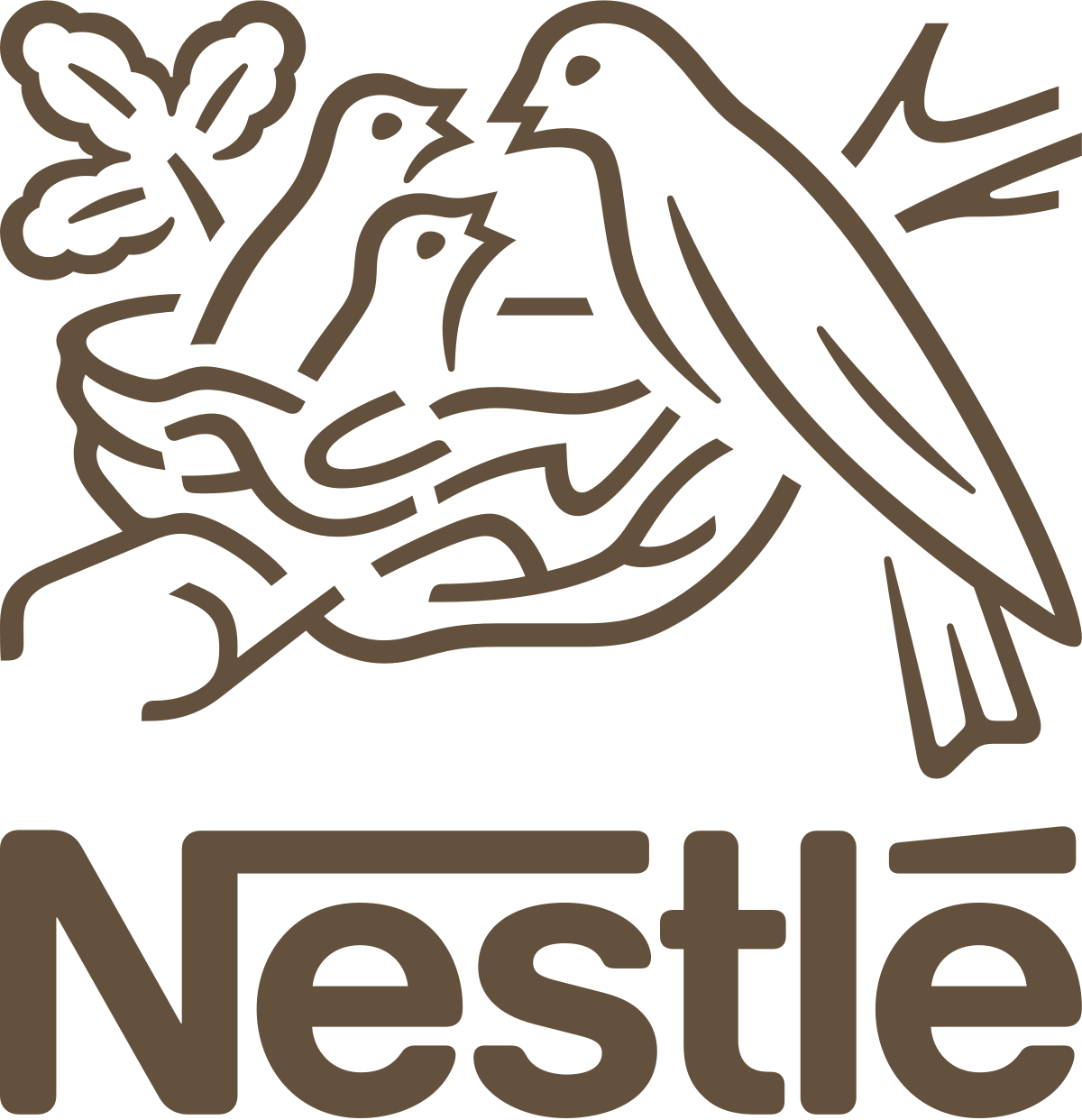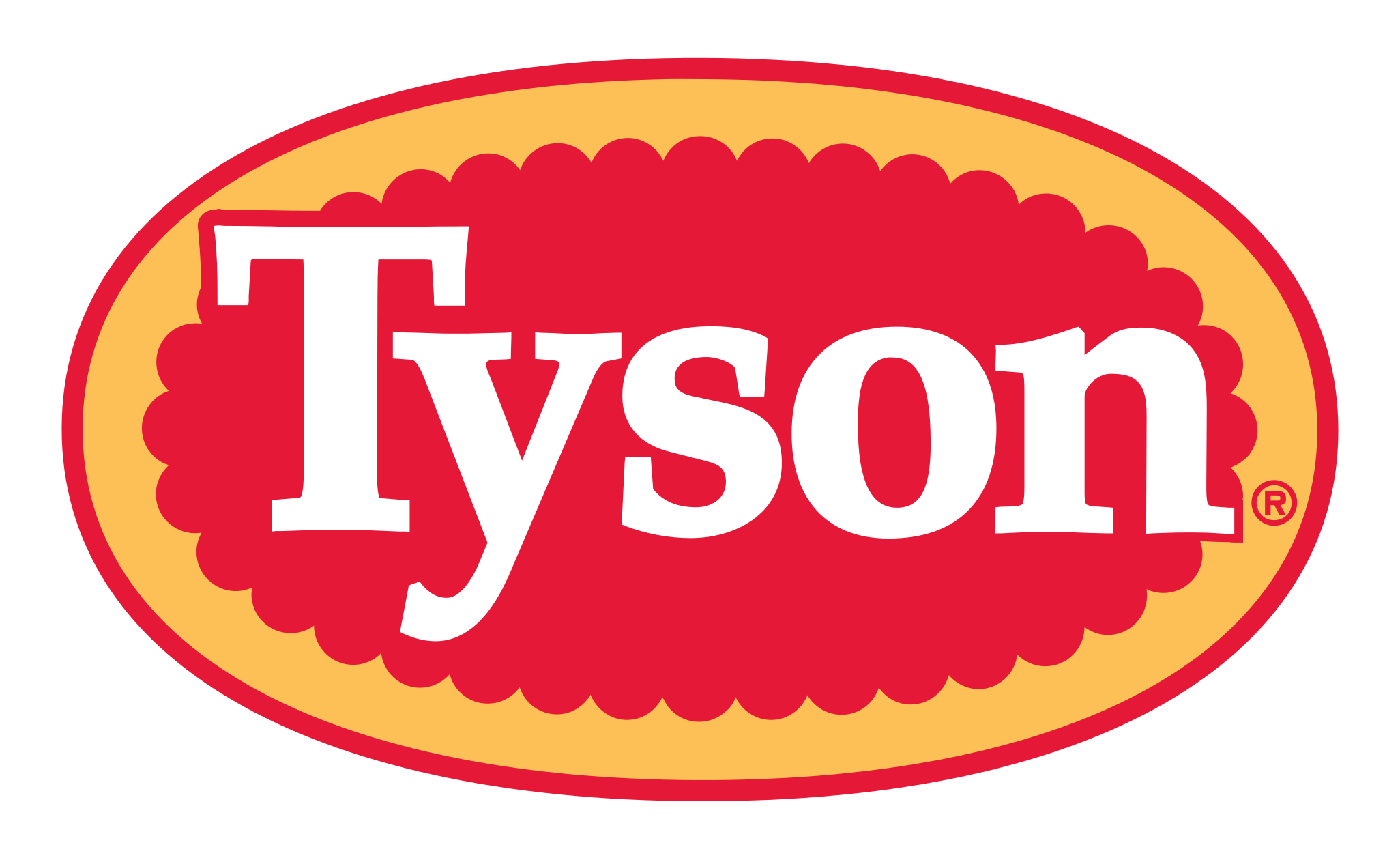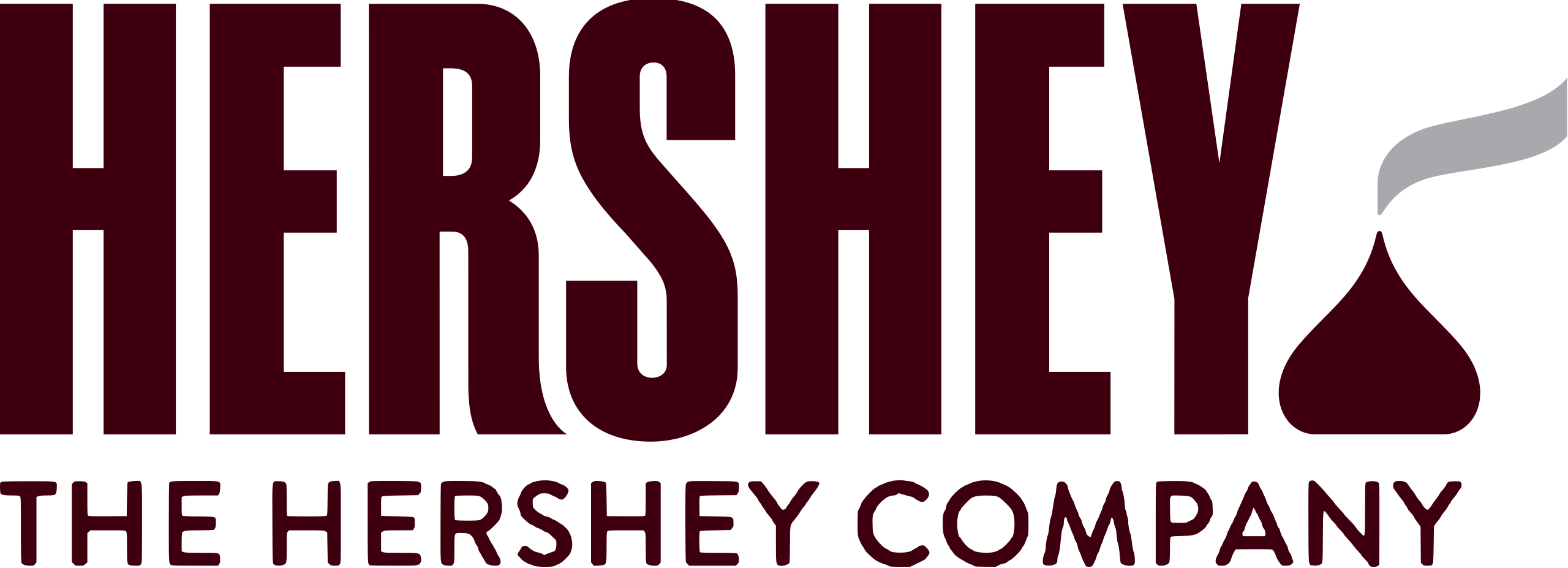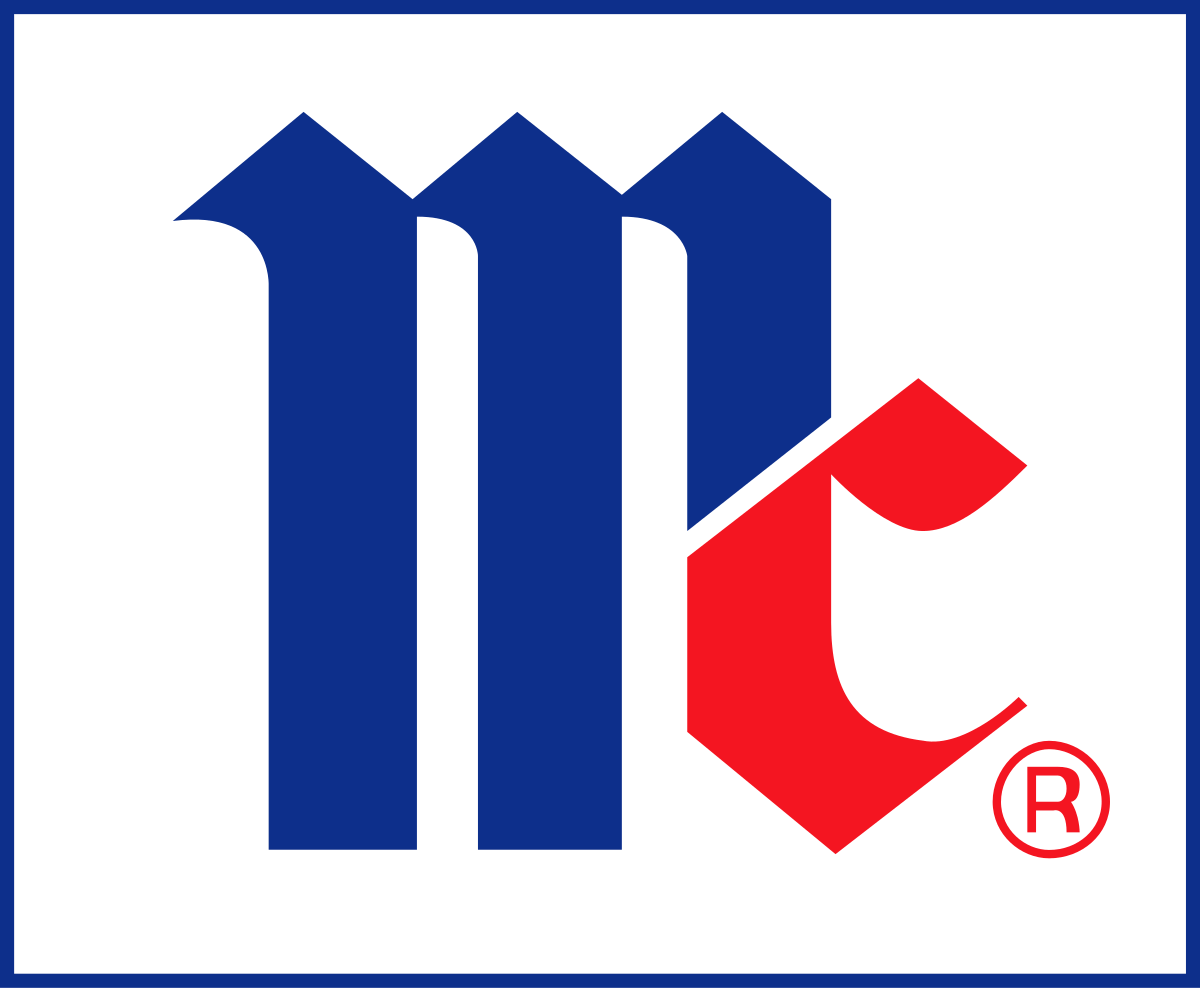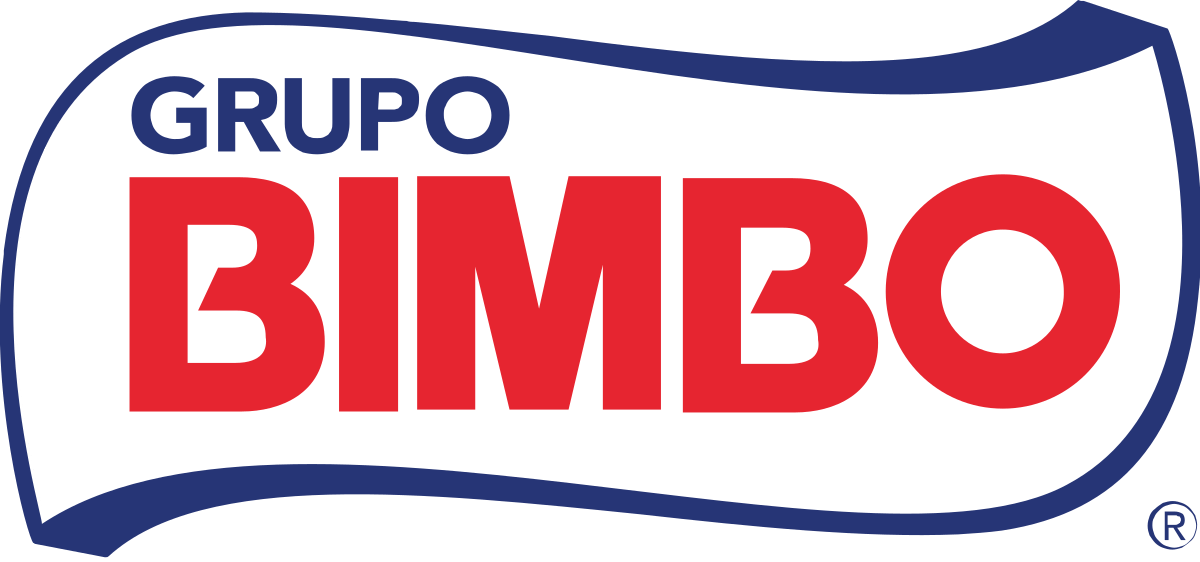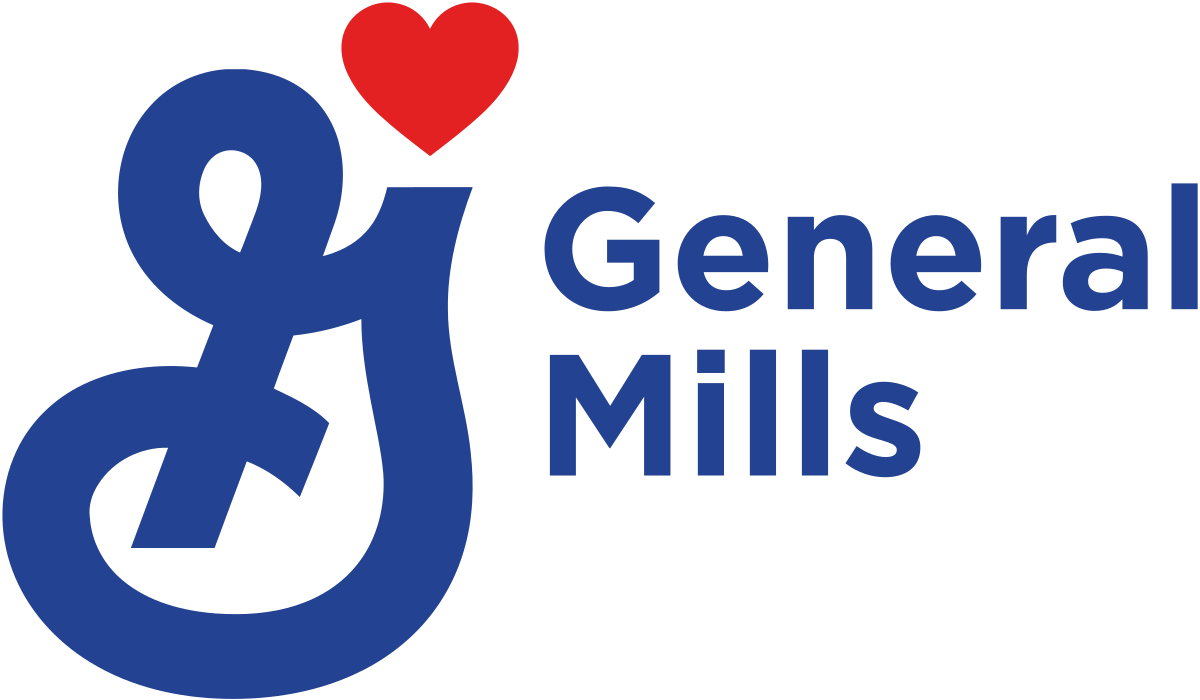Global Fruit Pomace Market, By Source, By Processing, By Fruit Type, By Application, By Distribution Channel, By Region & Segmental Insights Trends and Forecast, 2024 – 2034
- Industry: Food & Beverages
- Report ID: TNR-110-1328
- Number of Pages: 420
- Table/Charts : Yes
- October, 2024
- Base Year : 2024
- No. of Companies : 10+
- No. of Countries : 29
- Views : 10045
- Covid Impact Covered: Yes
- War Impact Covered: Yes
- Formats : PDF, Excel, PPT
Fruit pomace is the solid residue left after extracting juice or oil from fruits, consisting of peels, seeds, pulp, and stems. Globally, the fruit pomace market has been growing due to its sustainable use in various industries. For instance, apple pomace is commonly used in animal feed, while grape pomace is incorporated into wine-making by-products and nutraceuticals. “In Terms of Revenue, the Global Fruit Pomace Market was Worth US$ 3.7 Bn in 2023, Anticipated to Witness CAGR of 4.2% During 2024 – 2034.”
In daily life, fruit pomace finds applications in bakery products, dietary supplements, and pet food. It is valued for its high fiber content, antioxidants, and vitamins. In 2023, companies like Cargill have embraced fruit pomace to create eco-friendly food additives, reflecting its environmental benefits. Using fruit pomace reduces food waste and supports the circular economy, offering cost-effective and sustainable solutions for industries seeking natural ingredients.

| Application | Description | Examples | Benefits | Manufacturer Innovations |
| Animal Feed | Used as a nutritious ingredient in animal feed, providing essential fibers and nutrients. | Apple pomace is frequently added to cattle and pig feed. Grape pomace is also used in livestock diets. | Reduces feed costs while enhancing the health and digestion of animals. | Cargill introduced a sustainable livestock feed line in 2022 that incorporates fruit pomace for better nutrition. |
| Food Products | Incorporated into various food items, enhancing flavor and nutrition. | Grape pomace is utilized in granola bars, smoothies, and baked goods like muffins. | Increases dietary fiber content, promotes satiety, and minimizes food waste by utilizing byproducts. | Pomace Pantry launched fruit-based snacks in 2023, using apple and grape pomace to boost nutritional value. |
| Nutraceuticals | Extracts from fruit pomace are developed into supplements with various health benefits. | Grape seed extract from pomace is sold as a dietary supplement known for its antioxidant properties. | Supports cardiovascular health and provides antioxidant benefits, promoting overall well-being. | NutraBlend released a new line of antioxidant-rich supplements in 2021, featuring grape pomace extract. |
| Cosmetics | Used in cosmetic formulations for its antioxidant and anti-inflammatory properties. | Citrus pomace is included in skincare products, providing rejuvenating effects and natural fragrance. | Enhances skin health, hydrates, and improves the overall appearance of the skin. | Sangre de Fruta introduced a skincare line in 2023 that incorporates grape pomace for its anti-aging properties. |
| Biofuels | Processed into biofuels, contributing to renewable energy production. | Grape pomace can be converted into bioethanol through fermentation processes. | Provides a renewable energy source, reducing reliance on fossil fuels and promoting sustainability. | EcoFuel Technologies began producing bioethanol from fruit pomace in 2022, focusing on waste reduction. |
| Natural Colorants | Extracts from fruit pomace are used as natural food colorants. | Beetroot pomace is utilized for its vibrant red color in beverages and desserts. | Offers a natural alternative to synthetic colorants, appealing to health-conscious consumers. | Nature’s Colors developed a range of natural colorants from fruit pomace in 2021, catering to the food industry. |
| Composting and Fertilizers | Fruit pomace can be composted to enrich soil, serving as a natural fertilizer for agricultural purposes. | Apple and grape pomace enhance nutrient content when added to compost. | Improves soil quality, enhances plant growth, and supports sustainable agricultural practices. | AgriTech Solutions launched a composting initiative in 2023 to utilize fruit pomace, promoting sustainable farming. |
| Beverage Industry | Used in the production of beverages like wines and juices, enhancing flavor and nutritional content. | Grape pomace is used in fruit-infused wines and organic juices. | Adds depth of flavor and nutritional benefits to beverages, catering to health-conscious consumers. | Vino Verde Winery released a new line of organic wines in 2022, incorporating grape pomace for added health benefits. |
Opportunities in the Global Fruit Pomace Market
- Expansion in Functional Food and Beverage Industry: The global fruit pomace market presents significant opportunities in the functional food and beverage industry. As consumer demand for healthier, natural ingredients increases, fruit pomace, rich in dietary fiber and antioxidants, is gaining attention. For example, in 2023, companies like PepsiCo began exploring fruit pomace as a natural additive in their health drinks, enhancing nutritional value while reducing production costs. The use of apple, grape, and citrus pomace in smoothies, protein bars, and energy drinks allows companies to promote sustainability and meet growing consumer expectations for eco-friendly products. This trend aligns with the global push toward reducing food waste and increasing the use of plant-based ingredients in everyday products, opening new avenues for innovation in this market.
- Growth in Cosmetics and Personal Care Products: The cosmetic and personal care industry offers another growing opportunity for the fruit pomace market. With the global shift toward natural and organic beauty products, fruit pomace is increasingly being used as an ingredient in skincare and haircare formulations. In 2024, brands like L’Oréal and Garnier started incorporating grape pomace in exfoliants and apple pomace in anti-aging creams due to their rich antioxidant properties. These by-products help enhance product appeal while offering a cost-effective, eco-friendly alternative to synthetic ingredients. As sustainability becomes a central theme in beauty products, fruit pomace provides a compelling solution for brands looking to reduce waste while offering natural, nutrient-packed ingredients to consumers seeking greener, cleaner beauty options.
Organic by source category have emerged as a dominant segment in the global fruit pomace market capturing a revenue share of 54.2% in 2023. Organic fruit pomace is widely utilized in food products, animal feed, and cosmetics due to its sustainability and health benefits. For instance, organic apple pomace is a popular ingredient in healthy snacks, while organic citrus pomace is used in cosmetics for its antioxidant properties. This rising demand is driven by consumer preferences for eco-friendly and organic products, enhancing market growth in sectors like functional foods and skincare.
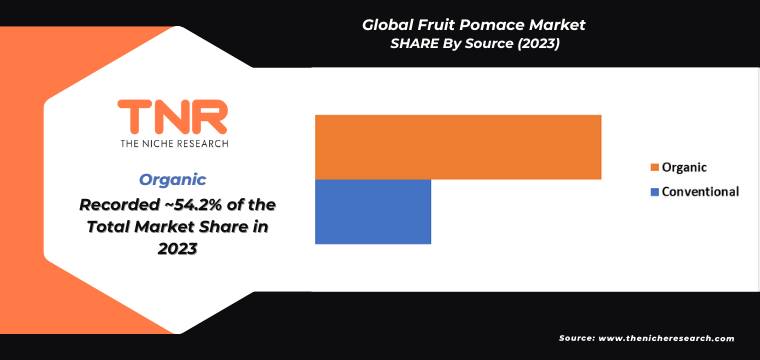
In 2023, wet segment solidified its position as the second-largest processing category within the global fruit pomace market in 2023, with a revenue share of 16.4%. Wet fruit pomace, known for its moisture content, is often used in animal feed and biofuel production. For example, wet apple pomace is incorporated into livestock feed due to its nutritional benefits, while wet citrus pomace is processed for pectin extraction, used in the food industry. This segment’s versatility and applications across industries have contributed to its growing prominence within the fruit pomace market.
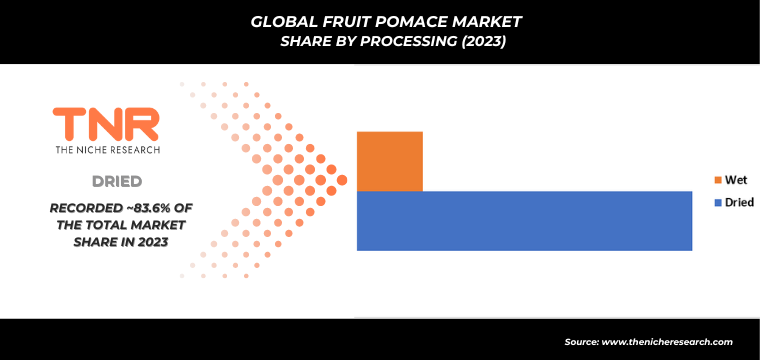
By fruit type, berries segment is anticipated to grow fastest over the forecast timeline in global fruit pomace market, capturing a revenue share of 20.7% in 2023. Berries, particularly blueberry and cranberry pomace, are valued for their rich antioxidant content, making them highly sought after in functional foods and dietary supplements. For instance, blueberry pomace is commonly used in health bars, while cranberry pomace is popular in beverages and nutraceuticals. The increasing demand for natural ingredients in wellness products is driving the rapid growth of the berries segment across various industries.
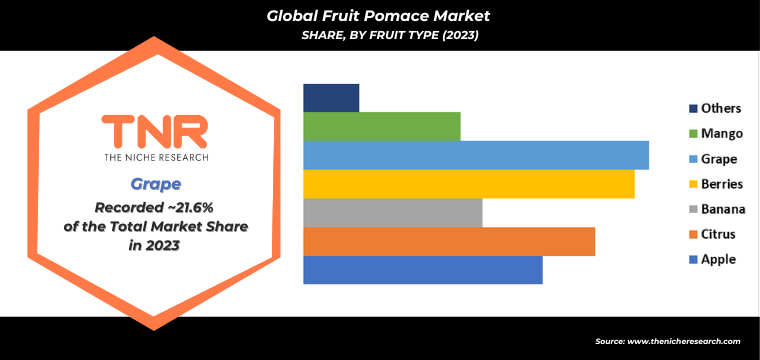
Dairy products, by application category dominated the global fruit pomace market in 2023 capturing a revenue share of 14.7%. Fruit pomace, particularly from apples and berries, is widely used in dairy applications such as yogurt and flavored milk due to its fiber and antioxidant content. For example, yogurt brands are increasingly incorporating berry pomace to enhance texture and nutritional value, while apple pomace is added to fermented dairy products for improved flavor and fiber enrichment. This trend is driven by growing consumer interest in functional, health-focused dairy products, making fruit pomace a valuable ingredient in the sector.
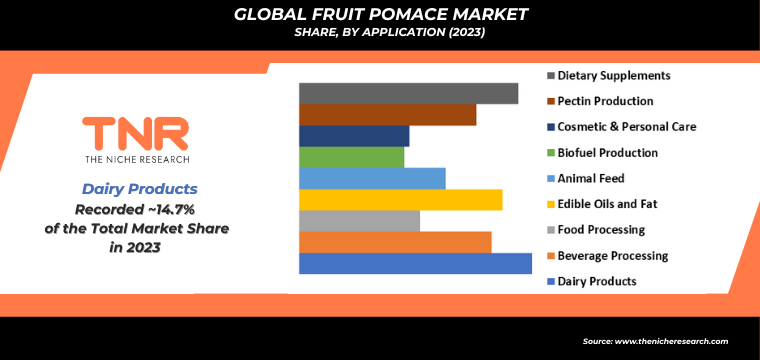
Offline segment generated the largest revenue share of 70.6% in 2023 in global fruit pomace market. Traditional distribution channels, such as supermarkets, specialty stores, and direct sales, continue to dominate due to consumer preferences for physical shopping experiences. For example, supermarkets often stock fruit pomace products for animal feed and health-conscious food items like fruit-enriched snacks. Specialty stores may offer pomace-based skincare products, particularly those derived from organic fruits. These physical outlets provide consumers the advantage of immediate product access and quality inspection, making offline sales a key driver in the market.
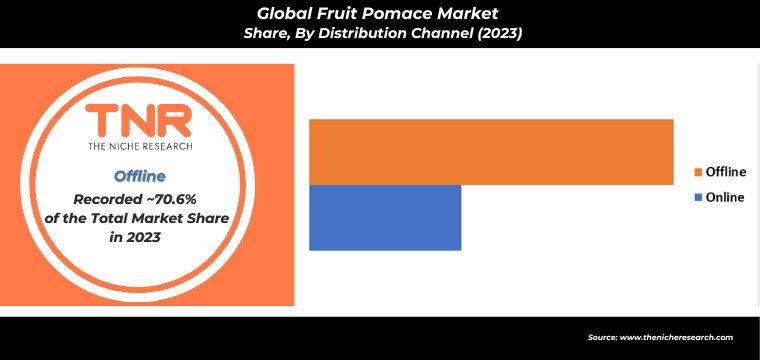
In 2023, North America solidified its dominance in the global fruit pomace market, contributing a revenue share of 25.5%. The region’s dominance is driven by increasing demand for sustainable food ingredients, animal feed, and cosmetics. For instance, apple pomace from U.S. orchards is widely used in health supplements and bakery products, while citrus pomace is utilized in the production of natural pectin for food processing. Additionally, rising consumer interest in organic and eco-friendly products has further boosted the region’s growth in industries like functional foods and skincare.
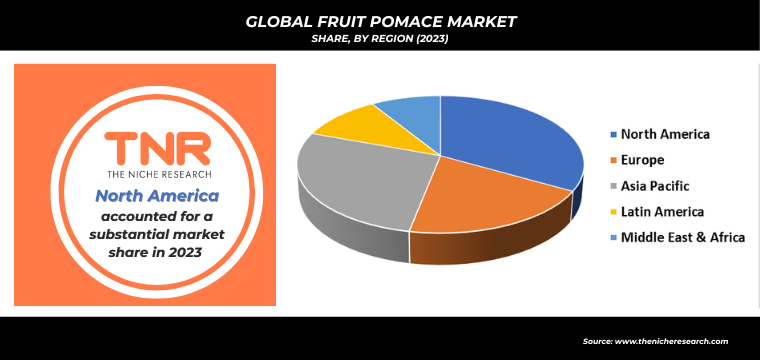
Competitive Landscape
Some of the players operating in the fruit pomace market are
- Agrana Beteiligungs-AG
- Appol sp. z o.o.
- Citrosuco S.A.
- FruitSmart Inc.
- GreenField Sp. z o.o.
- LaBudde Group, Inc.
- Lemon Concentrate S.L.
- Louis Dreyfus Company B.V.
- Marshall Ingredients, LLC
- Pacific Coast Fruit Products Ltd.
- Polyphenolics Inc.
- Sucocitrico Cutrale Ltd
- Whole Vine Products
- Yantai North Andre Juice Co. Ltd.
- Other Industry Participants
Global Fruit Pomace Market Scope:
| Report Specifications | Details |
| Market Revenue in 2023 | US$ 3.7 Bn |
| Market Size Forecast by 2034 | US$ 5.8 Bn |
| Growth Rate (CAGR) | 4.2% |
| Historic Data | 2016 – 2022 |
| Base Year for Estimation | 2023 |
| Forecast Period | 2024 – 2034 |
| Report Inclusions | Market Size & Estimates, Market Dynamics, Competitive Scenario, Trends, Growth Factors, Market Determinants, Key Investment Segmentation, Product/Service/Solutions Benchmarking |
| Segments Covered | By Source, By Processing, By Fruit Type, By Application, By Distribution Channel, By Region |
| Regions Covered | North America, Europe, Asia Pacific, Middle East & Africa, Latin America |
| Countries Covered | U.S., Canada, Mexico, Rest of North America, France, The UK, Spain, Germany, Italy, Nordic Countries (Denmark, Finland, Iceland, Sweden, Norway), Benelux Union (Belgium, The Netherlands, Luxembourg), Rest of Europe, China, Japan, India, New Zealand, Australia, South Korea, Southeast Asia (Indonesia, Thailand, Malaysia, Singapore, Rest of Southeast Asia), Rest of Asia Pacific, Saudi Arabia, UAE, Egypt, Kuwait, South Africa, Rest of Middle East & Africa, Brazil, Argentina, Rest of Latin America |
| Key Players | Agrana Beteiligungs-AG, Appol sp. z o.o., Citrosuco S.A., FruitSmart Inc., GreenField Sp. z o.o., LaBudde Group, Inc., Lemon Concentrate S.L., Louis Dreyfus Company B.V., Marshall Ingredients, LLC, Pacific Coast Fruit Products Ltd., Polyphenolics Inc., Sucocitrico Cutrale Ltd, Whole Vine Products, Yantai North Andre Juice Co. Ltd. |
| Customization Scope | Customization allows for the inclusion/modification of content pertaining to geographical regions, countries, and specific market segments. |
| Pricing & Procurement Options | Explore purchase options tailored to your specific research requirements |
| Contact Details | Consult With Our Expert
Japan (Toll-Free): +81 663-386-8111 South Korea (Toll-Free): +82-808- 703-126 Saudi Arabia (Toll-Free): +966 800-850-1643 United Kingdom: +44 753-710-5080 United States: +1 302-232-5106 E-mail: askanexpert@thenicheresearch.com
|
Global Fruit Pomace Market
By Source
- Conventional
- Organic
By Processing
- Dried
- Wet
By Fruit Type
- Apple
- Citrus
- Banana
- Berries
- Grape
- Mango
- Others
By Application
- Dairy Products
- Beverage Processing
- Food Processing
- Edible Oils and Fat
- Animal Feed
- Biofuel Production
- Cosmetic & Personal Care
- Pectin Production
- Dietary Supplements
- Others
By Distribution Channel
- Online
- Offline
- Supermarket/Hypermarket
- Convenience Stores
- Specialty Stores
- Others
By Region
- North America (U.S., Canada, Mexico, Rest of North America)
- Europe (France, The UK, Spain, Germany, Italy, Nordic Countries (Denmark, Finland, Iceland, Sweden, Norway), Benelux Union (Belgium, The Netherlands, Luxembourg), Rest of Europe)
- Asia Pacific (China, Japan, India, New Zealand, Australia, South Korea, Southeast Asia (Indonesia, Thailand, Malaysia, Singapore, Rest of Southeast Asia), Rest of Asia Pacific)
- Middle East & Africa (Saudi Arabia, UAE, Egypt, Kuwait, South Africa, Rest of Middle East & Africa)
- Latin America (Brazil, Argentina, Rest of Latin America)
Report Layout:
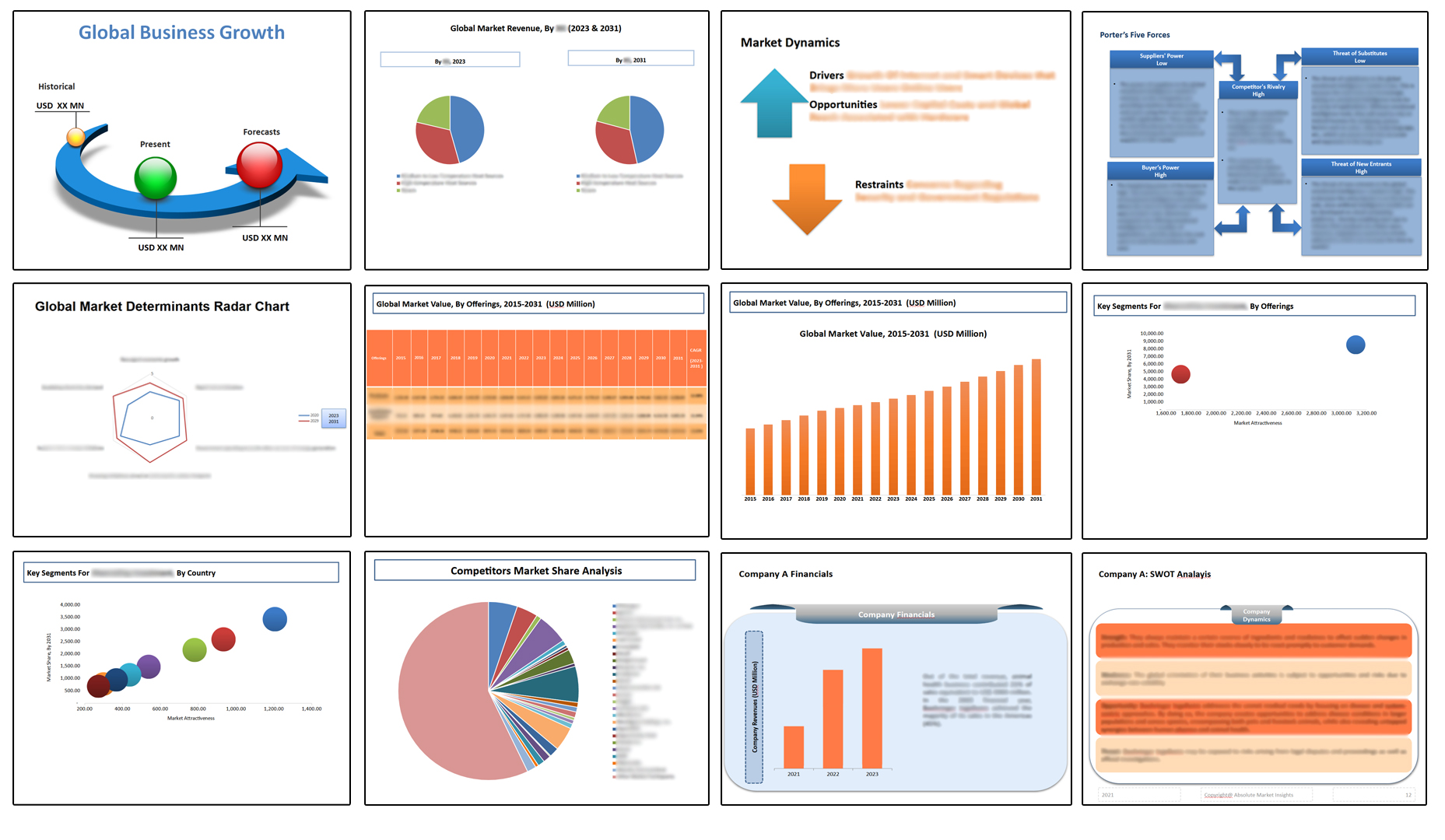
Table of Contents
Note: This ToC is tentative and can be changed according to the research study conducted during the course of report completion.
**Exclusive for Multi-User and Enterprise User.
Global Fruit Pomace Market
By Source
- Conventional
- Organic
By Processing
- Dried
- Wet
By Fruit Type
- Apple
- Citrus
- Banana
- Berries
- Grape
- Mango
- Others
By Application
- Dairy Products
- Beverage Processing
- Food Processing
- Edible Oils and Fat
- Animal Feed
- Biofuel Production
- Cosmetic & Personal Care
- Pectin Production
- Dietary Supplements
- Others
By Distribution Channel
- Online
- Offline
- Supermarket/Hypermarket
- Convenience Stores
- Specialty Stores
- Others
By Region
- North America (U.S., Canada, Mexico, Rest of North America)
- Europe (France, The UK, Spain, Germany, Italy, Nordic Countries (Denmark, Finland, Iceland, Sweden, Norway), Benelux Union (Belgium, The Netherlands, Luxembourg), Rest of Europe)
- Asia Pacific (China, Japan, India, New Zealand, Australia, South Korea, Southeast Asia (Indonesia, Thailand, Malaysia, Singapore, Rest of Southeast Asia), Rest of Asia Pacific)
- Middle East & Africa (Saudi Arabia, UAE, Egypt, Kuwait, South Africa, Rest of Middle East & Africa)
- Latin America (Brazil, Argentina, Rest of Latin America)
The Niche Research approach encompasses both primary and secondary research methods to provide comprehensive insights. While primary research is the cornerstone of our studies, we also incorporate secondary research sources such as company annual reports, premium industry databases, press releases, industry journals, and white papers.
Within our primary research, we actively engage with various industry stakeholders, conducting paid interviews and surveys. Our meticulous analysis extends to every market participant in major countries, allowing us to thoroughly examine their portfolios, calculate market shares, and segment revenues.
Our data collection primarily focuses on individual countries within our research scope, enabling us to estimate regional market sizes. Typically, we employ a bottom-up approach, meticulously tracking trends in different countries. We analyze growth drivers, constraints, technological innovations, and opportunities for each country, ultimately arriving at regional figures.Our process begins by examining the growth prospects of each country. Building upon these insights, we project growth and trends for the entire region. Finally, we utilize our proprietary model to refine estimations and forecasts.
Our data validation standards are integral to ensuring the reliability and accuracy of our research findings. Here’s a breakdown of our data validation processes and the stakeholders we engage with during our primary research:
- Supply Side Analysis: We initiate a supply side analysis by directly contacting market participants, through telephonic interviews and questionnaires containing both open-ended and close-ended questions. We gather information on their portfolios, segment revenues, developments, and growth strategies.
- Demand Side Analysis: To gain insights into adoption trends and consumer preferences, we reach out to target customers and users (non-vendors). This information forms a vital part of the qualitative analysis section of our reports, covering market dynamics, adoption trends, consumer behavior, spending patterns, and other related aspects.
- Consultant Insights: We tap into the expertise of our partner consultants from around the world to obtain their unique viewpoints and perspectives. Their insights contribute to a well-rounded understanding of the markets under investigation.
- In-House Validation: To ensure data accuracy and reliability, we conduct cross-validation of data points and information through our in-house team of consultants and utilize advanced data modeling tools for thorough verification.
The forecasts we provide are based on a comprehensive assessment of various factors, including:
- Market Trends and Past Performance (Last Five Years): We accurately analyze market trends and performance data from preceding five years to identify historical patterns and understand the market’s evolution.
- Historical Performance and Growth of Market Participants: We assess the historical performance and growth trajectories of key market participants. This analysis provides insights into the competitive landscape and individual company strategies.
- Market Determinants Impact Analysis (Next Eight Years): We conduct a rigorous analysis of the factors that are projected to influence the market over the next eight years. This includes assessing both internal and external determinants that can shape market dynamics.
- Drivers and Challenges for the Forecast Period:Identify the factors expected to drive market growth during the forecast period, as well as the challenges that the industry may face. This analysis aids in deriving an accurate growth rate projection.
- New Acquisitions, Collaborations, or Partnerships: We keep a close watch on any new acquisitions, collaborations, or partnerships within the industry. These developments can have a significant impact on market dynamics and competitiveness.
- Macro and Micro Factors Analysis:A thorough examination of both macro-level factors (e.g., economic trends, regulatory changes) and micro-level factors (e.g., technological advancements, consumer preferences) that may influence the market during the forecast period.
- End-User Sentiment Analysis: To understand the market from the end-user perspective, we conduct sentiment analysis. This involves assessing the sentiment, preferences, and feedback of the end-users, which can provide valuable insights into market trends.
- Perspective of Primary Participants: Insights gathered directly from primary research participants play a crucial role in shaping our forecasts. Their perspectives and experiences provide valuable qualitative data.
- Year-on-Year Growth Trend: We utilize a year-on-year growth trend based on historical market growth and expected future trends. This helps in formulating our growth projections, aligning them with the market’s historical performance.
Research process adopted by TNR involves multiple stages, including data collection, validation, quality checks, and presentation. It’s crucial that the data and information we provide add value to your existing market understanding and expertise. We have also established partnerships with business consulting, research, and survey organizations across regions and globally to collaborate on regional analysis and data validation, ensuring the highest level of accuracy and reliability in our reports.
